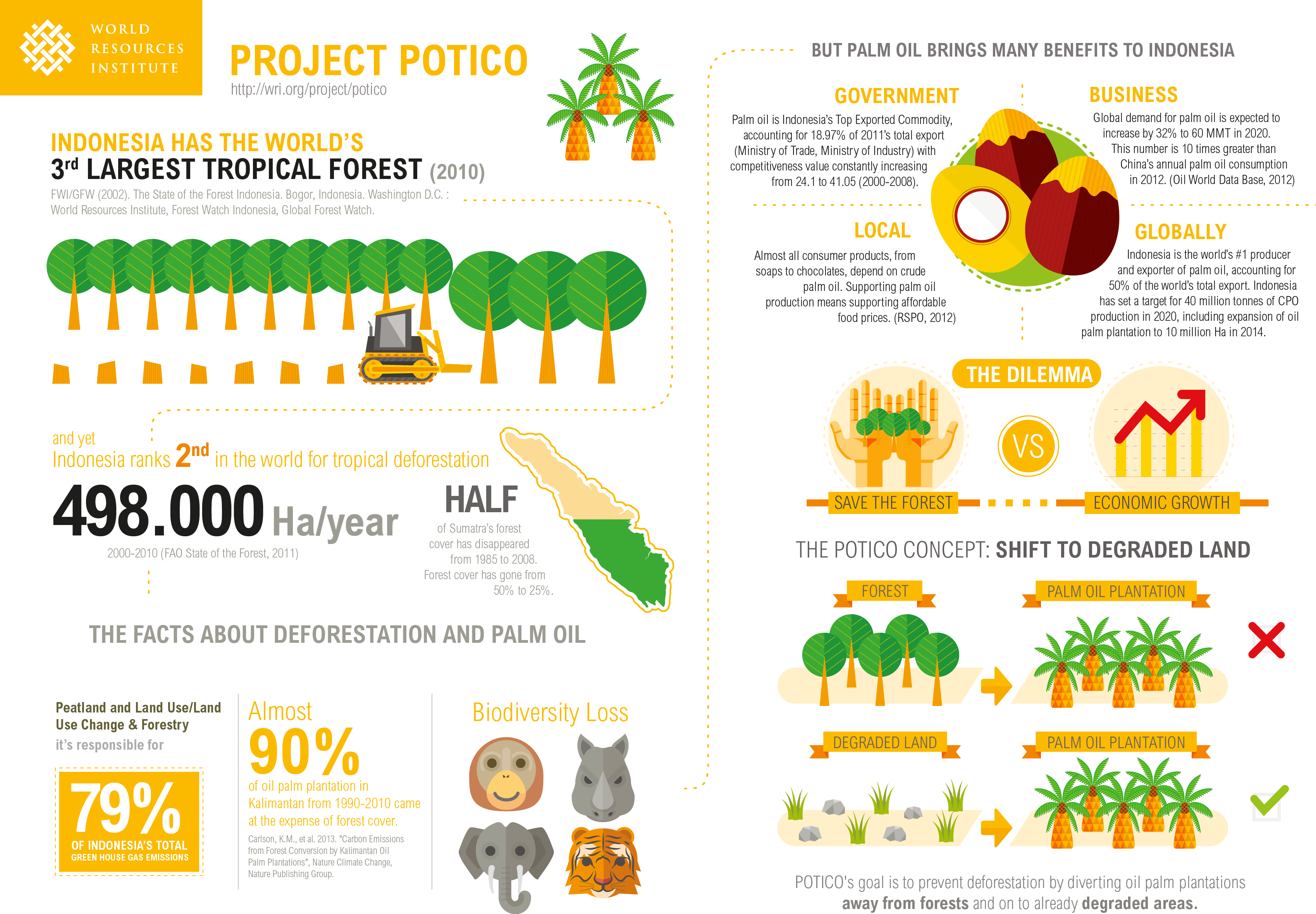
Forests and Landscapes in Indonesia
Data-driven analysis to support government and civil society actions for effective and equitable land-use in Indonesia.
This project includes work formerly known as Project POTICO.
Indonesia is the world’s third largest emitter of greenhouse gases, mainly due to the conversion of its forests and carbon-rich peatlands. This has ecological and social consequences, as Indonesia’s forests are home to thousands of plant and animal species. Fifty to sixty million Indonesians depend directly on the forests for their livelihoods.
Recognizing the domestic and international importance of its tropical landscape and the people in it, the Indonesian government has made encouraging decisions; it has voluntarily committed to a minimum 26% reduction in greenhouse gas emissions by 2020 and developed a strategy for land use and forestry emissions, extended a moratorium on new clearing of primary forests and peat lands from 2 to 4 years (2013-2015), and increasingly recognized the rights of forest communities and indigenous peoples. Indonesia must balance these environmental and social goals with a rapidly growing economy based on natural resources and corporate interests.
The Forests and Landscapes in Indonesia team works with all stakeholders in Indonesia’s forests to support decisions and management that is profitable and sustainable. Our work includes:
- generating environmental and governance data on natural resource specifically regarding forest lands;
- making these data available via interactive maps, reports and other tools;
- interpreting these data in the Indonesia policy context;
- working with government and civil society to improve forest monitoring;
- working with industry to enable sustainable expansion of key commodities;
- conducting capacity building to catalyze change on the ground.
Explore our free and easy-to-use interactive tools:
The Suitability Mapper enables users to identify potentially suitable sites for sustainable palm oil production in Kalimantan and Papua, Indonesia.

The Forest Cover Analyzer enables users to assess forest cover change and risks related to sustainable palm oil production in areas of their choice in Kalimantan, Indonesia.

Or learn more about the concept behind our work on palm oil in Indonesia here.
